Attractions

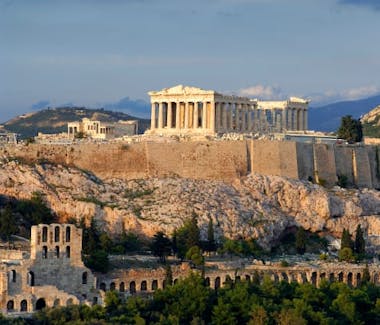




Athens 105 58, Greece
Acropolis Of Athens
The Acropolis of Athens is an ancient citadel located on a rocky hill above the city of Athens.
The word acropolis is from the Greek words ἄκρον (akron, "highest point, extremity") and πόλις(polis, "city").The term acropolis is generic and there are many other acropoleis in Greece.
Another famous and well-preserved example not far from Athens is Acrocorinth located in Ancient Corinth which can be visited on a day trip.
During ancient times the Acropolis of Athens was known also more properly as Cecropia, after the legendary serpent-man, Cecrops, the supposed first Athenian king.
Acropolis of Athens contains the remains of several ancient buildings of great architectural and historical significance, the most famous being the Parthenon.
In the fifth century BC known as the “Golden Age” it was Pericles who coordinated the construction of the buildings whose present remains are the site's most important ones, including the Parthenon, the Propylaea, the Erechtheion and the Temple of Athena Nike.
The Parthenon and the other buildings were seriously damaged during the 1687 siege by the Venetians during the Morean War when gunpowder being stored by the then Turkish rulers in the Parthenon was hit by a Venetian bombardment and exploded.
The buildings of Acropolis were subject of looting throughout the years of Otoman rule in Greece. The most famous “looting” was that of Lord Elgin who later sold his collection to the British Museum.
The value of this ancient citadel was not widely understood until 1833, a few years after Greece gained independence from the Ottoman Empire. From that year on, it has been operating as an archaeological site, meaning it is protected by law. For example, planes and drones cannot fly over the Acropolis.
The Acropolis of Athens is a six minute walk from the New Acropolis Museum and 20-25 minutes walk from our site.
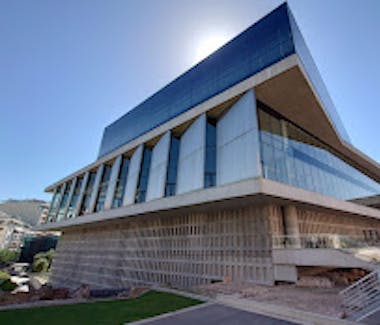

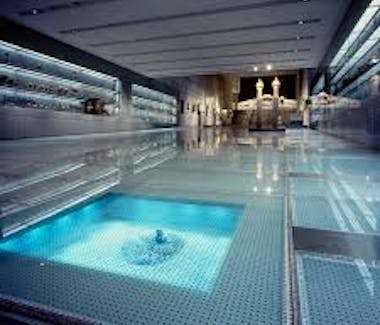
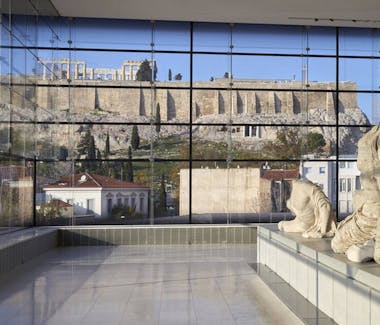
Dionysiou Areopagitou 15, Athina 117 42, Greece
The Museum of Acropolis
The new museum of Acropolis is located by the southeastern slope of the Acropolis hill, on the ancient road that led up to the "sacred rock" in classical times. Set only 280 meters , away from the Parthenon, and a 400 meters walking distance from it, the museum is the largest modern building erected so close to the ancient site, although many other buildings from the last 150 years are located closer to the Acropolis.
The Museum’s opening took place on the 20th of June 2009.
The entrance to the building is on Dionysiou Areopagitou Street and directly adjacent to the Akropoli metro station the red line of the Athens Metro.
The museum of Acropolis is a 15-20 minutes walking distance from our site.
The Acropolis metro station is one stop away from Syngrou-Fix metro station which is 5-6 minutes walking distance from the hotel
For tickets click here
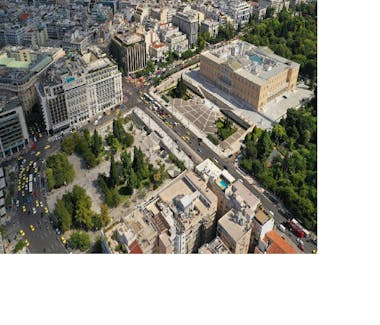


Syntagma Square
Syntagma Square
Syntagma Square, which is translated to "Constitution Square", is the central square of Athens.
The square got its name from the rising of Athenians against King Otto, the first appointed monarch of Greece following its independence revolution against Turks. The rising took place on 3rd of September 1843 to demand a constitution.
Syntagma Square is the most important square of modern Athens from both a historical and social point of view, at the heart of commercial activity and Greek politics. The name Syntagma alone also refers to the neighborhood surrounding the square. The metro station underneath the square, where lines 2 and 3 connect, along with the tram terminal and the numerous bus stops, constitutes one of the busiest transport hubs in the country.
To the east of the Square there is the old Royal palace built by King Oto, which nowadays houses the Greek Parliament and is surrounded by the National Gardens which are open to the public.
Every hour, the changing of the guard ceremony, performed by the Presidential Guard, is conducted in front of the Tomb of the Unknown Soldier on the area between the Syntagma Square and Parliament building. On certain days, a ceremonial changing of the guard occurs with an army band and the majority of the 120 Evzones present at 11 am
Greeks are especially proud of the Evzones. The name comes from their special outfits, which used to be the outfit of Greeks before adopting western type dressing Greeks fought during the revolution against Turks on 1821 were dressed like Evzones.
More information on the Presidential Guard its history and its mission can be found HERE
Syntagma Square is a 30 minute walking distance from the Hotel. Alternatively Guests can walk to the Sygrou-Fix metro station (6 minute walk from our Hotel). Syntagma Square is 2 stations away just after Acropolis station.




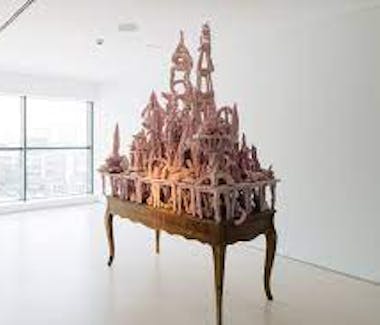

KALLIRROIS AVE. & AMVR. FRANTZI STR
The National Museum of Contemporary Art
The National Museum of Contemporary Art Athens (EMST) began its operation in 2000. It is now permanently located at the former FIX brewery, the reconstruction of which was completed in February 2014. In February, 2020, EMST opened its doors in full operation to the public.
The constant aim of the museum is the promotion of education in the arts and raising public awareness regarding contemporary culture, in combination with the development of scientific research and specialization in museology, history and theory of contemporary art. One of its founding goals is to promote innovative and experimental artistic movements and the production of audiovisual works via new media.
The museum offers the public opportunities to interact with contemporary art through its exhibitions, activities, programs and publications. Its collection comprises the works of Greek and international artists based on different art mediums -painting, sculpture, video, installations, photography, engraving, industrial design, etc. – that deal with current and timeless issues.
The museum is just 5 minutes walking distance from our property.
For more information regarding visits and tickets click HERE

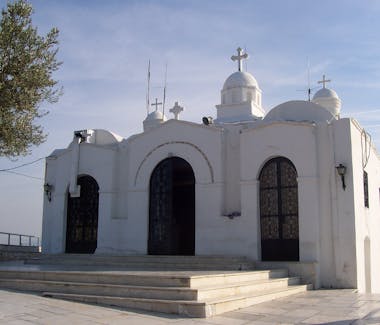


Aristippou, Athens, Greece
Lycabettus Hill
Lycabettus Hill, also known as Lycabettos, Lykabettos or Lykavittos is a Cretaceous limestone hill in the Greek capital Athens. At 277 meters (908 feet) above sea level, it is is the highest point in Central Athens and pine trees cover its base. The name also refers to the residential neighbourhood immediately below the east of the hill.
The hill is a tourist destination and can be ascended by the Lycabettus Funicular, a funicular railway which climbs the hill from a lower terminus at Kolonaki (The railway station can be found at Aristippou street). At its two peaks are the 19th century Chapel of St. George, a theatre, and a restaurant.
The 360o views of Athens from the St George Chappel are spectacular.
Getting to the funicular railway from our hotel will take 10-15 minutes by taxi
More information on the funicular railway timetables and ticket prices you can find HERE





Adrianou street, Adrianoy, Athens, Greece
Plaka
Pláka is the old historical neighborhood of Athens, clustered around the northern and eastern slopes of the Acropolis, and incorporating labyrinthine streets and neoclassical architecture. Plaka is built on top of the residential areas of the ancient town of Athens. It is known as the "Neighborhood of the Gods" due to its proximity to the Acropolis and its many archaeological sites.
Plaka is one of the oldest, as well as one of the most alluring and lively districts in Athens. It is very near other scenic neighborhoods like Anafiotika and Monastiraki. and is under strict zoning and conservation regulations, as the only neighborhood in Athens where all utilities (water, power, cable television, telephone, internet, and sewage) lie underground in fully accessible, custom-made tunneling.
It is visited by hundreds of thousands of tourists around the year and yet it has never lost its charm. Full of nice tavernas most of them family run serving delicius Greek food.
Plaka is also home of several ancient monuments like the Lysicrates Monument, the Roman Agora and many others and houses a number of museums such as the Museum of Greek Folk Musical instruments, the Athens University Museum, the Jewish Museum and others
Plaka neighborhood is adjacent to the Acropolis Museum so reaching it from our site will take 15-20 minutes walk.

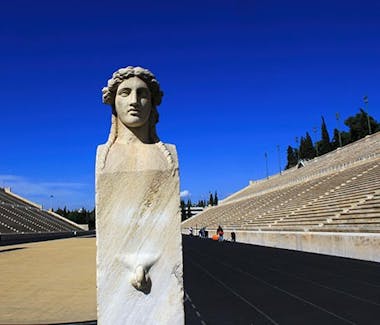


Pagrati, Athens
The Panathenaic Stadium
The Panathenaic Stadium was built on the site where the ancient stadium of Athens which for many centuries hosted games in which nude male athletes competed (gymnikoi agones).
The games, which since antiquity had been held in an area far from the city, were included in the program of the Panathenaia festival celebrations in 566/565 BC.
It was the orator Lykourgos who actually took the initiative in 338 BC of building the Stadium in its original form and use it for the first time during the celebration of the Great Panathenaia in 330/29 BC.
During Roman times the orator and sophist Herodes Atticus spent part of his fortune in erecting monuments in several cities of the Roman Empire and thanks to him the Stadium was greatly improved
From as early as 1836, archaeological excavation had uncovered traces of the ancient Stadium on its Roman form, and on the basis of these findings, as well as of the finds from the excavations conducted by Ernst Ziller in 1869 νthe plan for its reconstruction was prepared by the architect Anastasis Metaxas. The rebuilding of the Stadium from Pentelic marble is distinguished by its high degree of fidelity to the ancient monument of Herodes
The first Olympic games were held in this Stadium from March 25th 1896 until April 3rd 1896 and were a great success.
The winner in the Marathon race, the most popular contest, was the Greek Spyros Louis. It was in the Panathenaic Stadium that the Olympic Hymnwas heard for the first time, with lyrics by poet Costis Palamas and music by composer Spyros Samaras.
The Panathenaic Stadium has been the venue for noble competition and fair play, of mind and of body, since Antiquity and Athenians have every reason to be proud of what this Stadium has stood for throughout the centuries until modern times.
The Panathenaic Stadium is 30 minutes walking distance from our hotel and the visit could be combined walking by other sites like the Temple of Olympian Zeus.
Public transport will take around 15 minutes
Tickets can be obtained on site
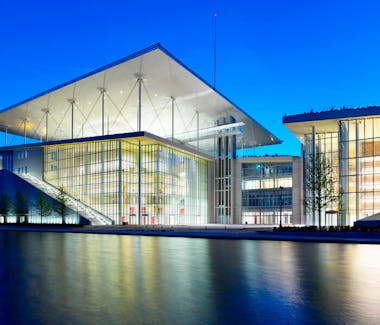
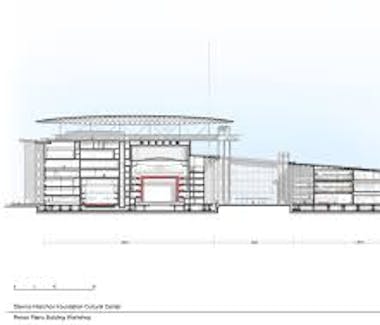




Leof. Andrea Siggrou 364, Kallithea 176 74
The Stavros Niarchos Foundation Cultural Center (SNFCC)
The Stavros Niarchos Foundation (SNF) is a private, international philanthropic organization, created by Stavros Niarchos, the legendary Greek Shipowner. SNF is making grants to nonprofit organizations globally in the areas of arts and culture, education, health and sports, and social welfare.
The Stavros Niarchos Foundation Cultural Center (SNFCC) is a $861 million project which was completed in 2016, and was donated to the Greek state in 2017. It is located in the bay of Faliro in Athens and includes new facilities for the National Library of Greece (NLG) and the Greek National Opera (GNO), as well as the 210,000 m2 (2,300,000 sq ft) Stavros Niarchos Park. The center was designed by architect Renzo Piano and its construction was funded by the Stavros Niarchos Foundation.
Renzo Piano designed SNFCC rising out of the ground like an artificial hill and the roof of both the library and the opera house is emerging from it maintaining the slope. The library is lower and the ‘hill’ concludes with the opera house. The roof of the library is planted with indigenous Greek plants.
On top of the opera house there is a canopy supported on thin steel columns. According to Piano, "the canopy represents a cloud hovering over the highest point of the hill". The roof of the building is covered with a 100x100 meter photovoltaic field, generating around 3 GWh per year.The roof is designed in a way to have increased resilience against hurricanes.
The design for the National Opera includes a 1,400-seat opera auditorium and a 400-seat black box theatre.
SNFCC is located 3.8 kilometers away from our hotel and is a 5 minutes drive
Art and Culture events are taking place throughout the year.
For events calendar and tickets clickhere For eat & drink information clickhere
